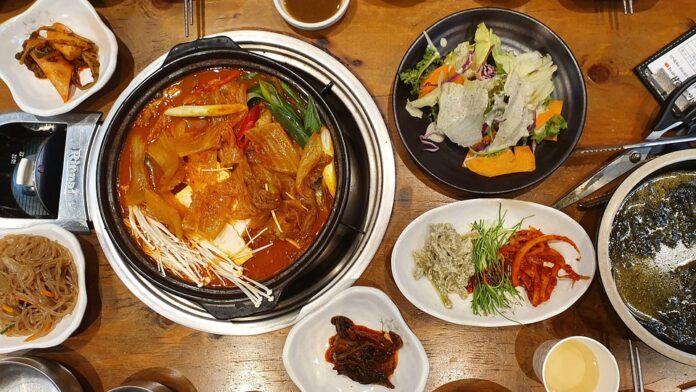Introduction
Korean pop culture, also known as the Hallyu Wave, has been sweeping the world in recent years, influencing various industries and sectors. One such sector that has been greatly impacted by the rise of Korean pop culture is the restaurant industry, particularly Korean restaurants. In this report, we will explore the impact of Korean pop culture on Korean restaurants and how they are leveraging the Hallyu Wave to attract customers and increase their business.
Increased Interest in Korean Culture
The global popularity of Korean pop culture, including K-pop music, K-dramas, and Korean fashion, has led to a growing interest in Korean culture overall. This increased interest has translated into a greater curiosity about Korean cuisine and a desire to experience authentic Korean flavors. As a result, Korean restaurants have seen a surge in popularity in various parts of the world, especially in countries where the Hallyu Wave has made a significant impact.
Rising Demand for Korean Food
According to industry data, the demand for Korean food has been steadily increasing in recent years, with more people seeking out Korean restaurants for a taste of the culture. This trend is driven by the growing popularity of Korean pop culture and the desire to experience the same flavors and dishes that are often featured in K-dramas and K-pop music videos.
Expansion of Korean Restaurant Chains
To meet the rising demand for Korean food, many Korean restaurant chains have expanded their operations globally. Companies such as Bibigo, Bonchon, and Seoul Garden have opened branches in various countries, capitalizing on the popularity of Korean pop culture to attract customers. These chains offer a mix of traditional and modern Korean dishes, catering to a wide range of tastes and preferences.
Marketing Strategies
Korean restaurants have been leveraging the Hallyu Wave to market their establishments and attract customers. Many restaurants use popular K-pop songs and K-dramas in their advertising campaigns to appeal to fans of Korean pop culture. Some restaurants even host events and promotions featuring K-pop idols or actors to draw in customers and create a buzz around their establishments.
Social Media Marketing
Social media has played a crucial role in the marketing strategies of Korean restaurants. Many restaurants use platforms like Instagram, Facebook, and Twitter to showcase their dishes, promote special events, and engage with customers. By leveraging the power of social media, Korean restaurants are able to reach a wider audience and connect with fans of Korean pop culture who are interested in trying authentic Korean cuisine.
Collaborations with K-pop Stars
Another effective marketing strategy employed by Korean restaurants is collaborating with popular K-pop stars. Many restaurants have partnered with K-pop idols to create signature dishes or limited-time menus, attracting fans who want to experience the same food enjoyed by their favorite artists. These collaborations not only drive foot traffic to the restaurants but also generate buzz on social media and in the press.
Financial Impact
The impact of Korean pop culture on Korean restaurants can also be seen in their financial performance. Many Korean restaurants have reported an increase in sales and revenue following the rise of the Hallyu Wave. This growth can be attributed to the influx of customers seeking out Korean cuisine, as well as the effective marketing strategies implemented by these establishments.
Investment Opportunities
As the popularity of Korean pop culture continues to grow, there are significant investment opportunities in the Korean restaurant industry. Investors looking to capitalize on the Hallyu Wave can consider investing in established Korean restaurant chains or supporting new ventures that are looking to expand globally. With the right marketing strategies and a focus on quality and authenticity, Korean restaurants have the potential to thrive in the current market environment.
Challenges and Opportunities
While the impact of Korean pop culture on Korean restaurants has been largely positive, there are also challenges that establishments face. Competition in the industry is fierce, with many new Korean restaurants entering the market to cater to the growing demand. To stand out in this crowded landscape, Korean restaurants need to differentiate themselves through unique offerings, exceptional service, and a strong brand presence. By embracing the opportunities presented by the Hallyu Wave and staying ahead of industry trends, Korean restaurants can continue to attract customers and drive growth in the years to come.
In conclusion, the impact of Korean pop culture on Korean restaurants is undeniable. The rise of the Hallyu Wave has led to increased interest in Korean cuisine, as well as greater opportunities for Korean restaurants to expand their businesses globally. By leveraging the popularity of Korean pop culture and implementing effective marketing strategies, Korean restaurants can attract customers, drive sales, and create a unique dining experience that resonates with fans of Korean culture worldwide.




